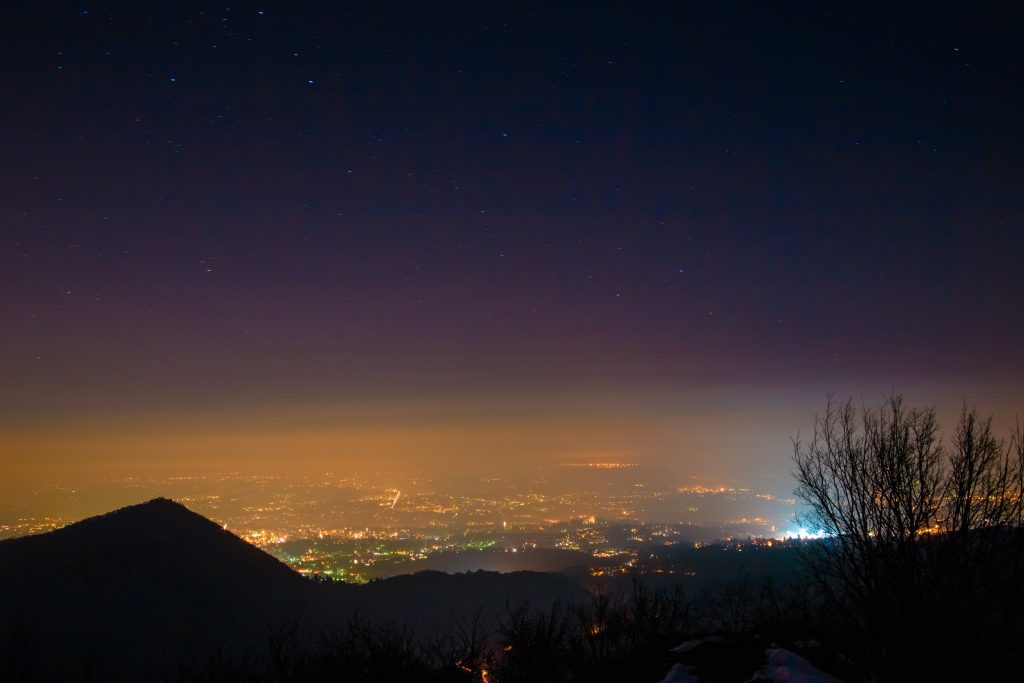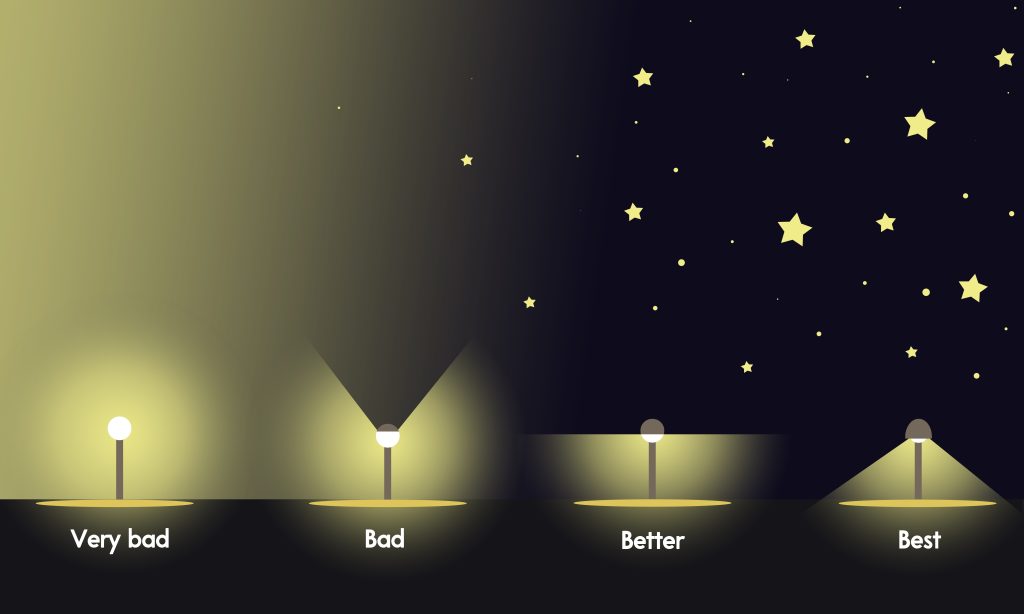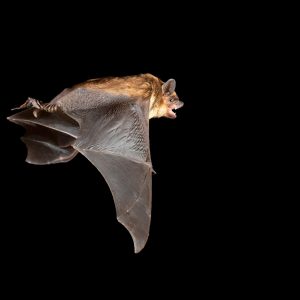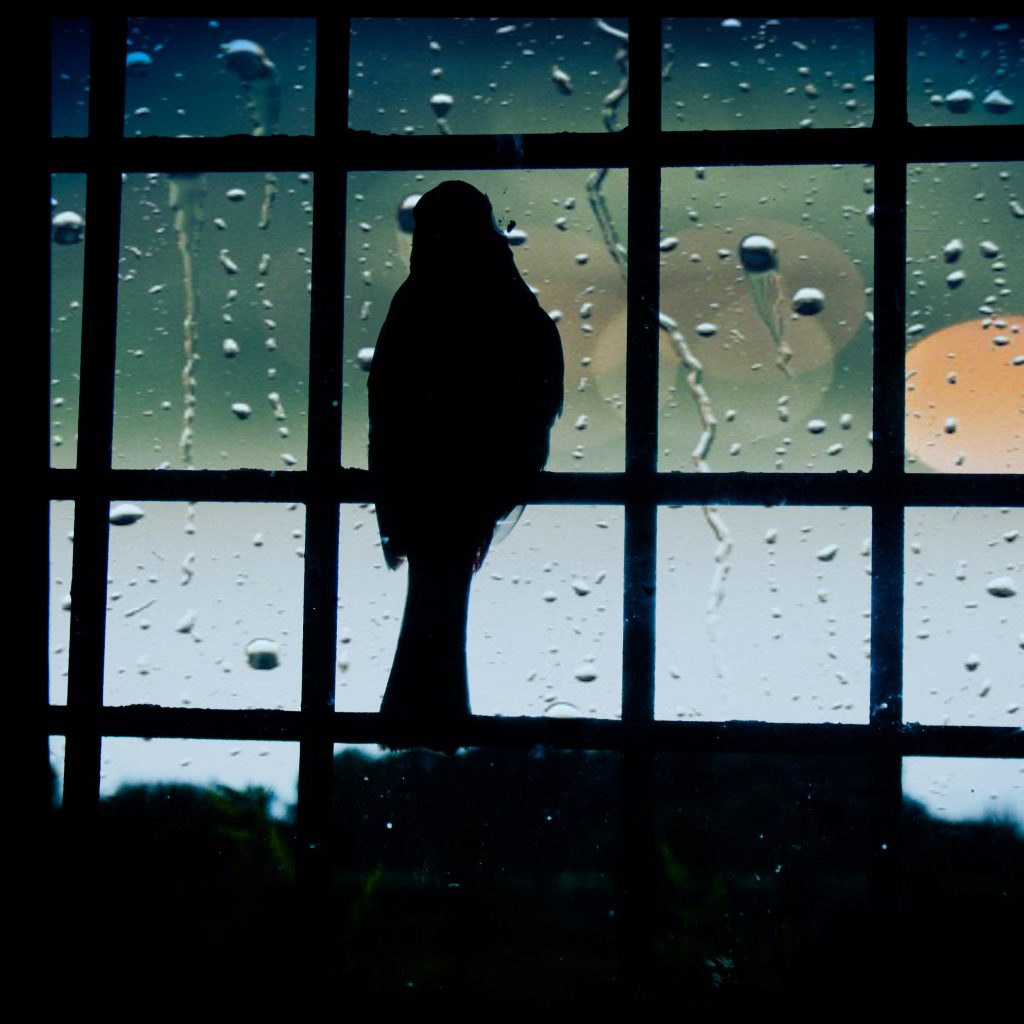
Light pollution is excessive, inappropriate, intrusive artificial light. Different types of light pollution have been identified, including: Glare (think car headlights); skyglow – the result all the light that escapes upward, causing the night sky to appear light; light trespass – light falling where it is not wanted; and light clutter (Las Vegas is the perfect example). The amount of artificial light covering the earth is increasing by 2% a year. Although the newer LED lighting is more energy-efficient, it also emits more light than older technology, increasing the amount of unwanted light.

Humans
Artificial light in the nighttime (aka ALAN) disrupts out circadian rhythms. This can cause sleep problems, which in turn negatively affect one’s health. Research has linked light pollution to serious health problems such as heart disease, diabetes and cancer.
Lack of darkness reduces or shuts down the production of melatonin, which acts as an antioxidant and an anti-cancer agent, as well as regulating metabolism and immune response
We are also missing out on the wonder of the night sky. The sky around populated areas are so light in many places that it is now difficult, if not impossible, to see the stars.
Plants
Trees that are sensitive to day length can be affected by artificial nighttime lighting. They tend to hold their leaves longer, for one thing. If there is a lot of snow and/or ice, it will cling to the leaves and the weight could cause branches to break that if bare would be fine.
Continuous lighting (not turned off at night) may cause leaves to grow larger. Rather than being a good thing for the tree, it could make them more susceptible to air pollution and water stress. Birch trees and Dogwoods are particularly sensitive to excessive light.
Deciduous trees and shrubs may hold onto their leaves longer, and delay color changes. The result is delay or loss of the trigger to send stored sugars to the tree roots to be stored for the winter. Trees may not harden off in time, leaving buds open to potential frost damage.
Flowers that require extended hours of darkness to flower may not bloom. Trees may bloom as much as a week earlier than historically, thus increasing their chance of being damaged by spring frosts.

Mammals
Light skies simulate the conditions during a full moon. Small foraging animals usually decrease their activity around this time to avoid predation. With the nights all being lighter, this behavior is becoming the norm. To compensate they may become more active during the day, thus increasing their risk. Decreased foraging activity in turn makes it harder for nocturnal predators to find them.
Birds
Most songbirds and water birds migrate at night. Light pollution disrupts their migration. Birds are often attracted to office buildings illuminated at night resulting in fatal crashes. Some of these species are now in decline and many are considered threatened.

Fish
Light in or over the ocean can disrupt feeding habits of fish.
Some species’ (e.g. clownfish) eggs will not hatch if exposed to artificial light.
Salmon flock to lighted areas during the nighttime, making them easy prey, and may be one of the major causes of their decline.
Amphibians
May confuse sea turtle hatchlings, causing them to move toward the source and away from the ocean.
Excess light at night reduces male frogs’ mating calls, thus reducing frog reproduction.
Insects
Loss of insects can disrupt entire ecosystems.
Nocturnal moths use the moon and stars to help them navigate. This may be the reason that moths flock to outdoor lights. It confuses rather than attracting them, and the light makes them easy prey for bats and owls. Those that aren’t eaten often die from sheer exhaustion. Some moths are important pollinators, so their target plants are affected also.
Bees suffer from loss of sleep much like we do. Spending less time asleep limits their ability to repair their bodies and affects reproduction.






